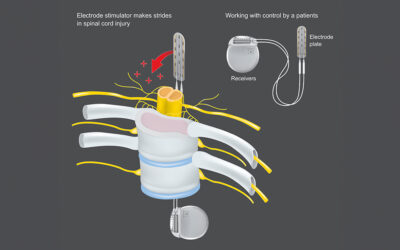Back injuries often plague those who lift weights on a regular basis — but with some proactive adjustments to your routine, you can significantly decrease your risk.
From rows to squats, the back plays a critical role in many weightlifting exercises — and developing strong back muscles can help you push yourself farther at the gym for a wide variety of lifts.
As with any part of your body, it’s impossible to keep your back completely safe from injury while you’re working out, but there are some simple steps you can take to significantly decrease your risk. When the price of a setback is not only losing hard-won progress, but potentially developing more serious health issues, prevention is well worth the effort.
With all of that in mind, here are five tips to prevent common back injuries while you lift.
1. TRAIN YOUR POSTURE
As you probably know, poor form greatly increases your risk of injury in any exercise. If you’re working on your back, you’ll want to keep your vertebrae neatly aligned to avoid placing too much pressure on a particular bone or muscle.
If you’re new to lifting, don’t simply mimic what you see others doing at the gym. Instead, ask a trainer or do some research online in order to better understand how you should position your body. If you’re a more experienced gym-goer, it’s still a good idea to check up on your form every now and then. Protect your body by regularly recalibrating your form and squelching any bad habits before they lead to injury.
2. RECOGNIZE THE RISKS
Any weightlifting exercise that involves flexion (forward bending) or extension (backward bending) of the joints in your back puts those areas at risk. These movements often result in sprains (a tear or rupture of a ligament), but they can lead to more serious injuries as well. Extreme extension, for example, can lead to spondylolysis, or cracks in the vertebrae. Similarly, extreme flexion can lead to a herniated disc.
These risks aren’t limited to exercises that specifically target the back. The most common weightlifting-related cause of herniated discs is the deadlift, which — when done properly — doesn’t depend on back flexion or extension for power, but when done incorrectly, puts a dangerous amount of pressure on the vertebrae. Deadlifts can also exacerbate degenerative disc disease, lumbar spinal stenosis, and other chronic conditions affecting the lower back.
3. KNOW WHEN IT’S TIME TO STOP
That twinge you felt while working out might be gone by tomorrow with a bit of stretching and rest. If you push the compromised area through additional stress, however, it can turn into something worse. Don’t ignore what your body is telling you. The burn of a fatigued muscle feels very different from a pull in your back, and “no pain, no gain” only works when you don’t sabotage the body you’re trying to strengthen. If you’re feeling pain when lifting, it’s time to call it a day — plain and simple.
4. MODIFY YOUR ROUTINE
First off, I recommend that you always wear a weightlifting belt when working out, as it can do wonders to stabilize and protect your back during most exercises. However, if a particular movement causes you problems even with the belt on, consider finding an alternative. For most lifts, there are one or more corresponding exercises that can target similar muscles without causing the same pain.
5. STRETCH
To learn proper posture is one thing, but to fully put it into practice requires some extra work. As any knowledgeable trainer will tell you, a dedicated stretching routine is the key to sustainable lifting. In order to build a strong and resilient back, consult a fitness trainer or orthopedic specialist you trust and create a stretching regimen to maintain the integrity of your back for future challenges. For maximum benefit, stretch both before and after each lifting session.



